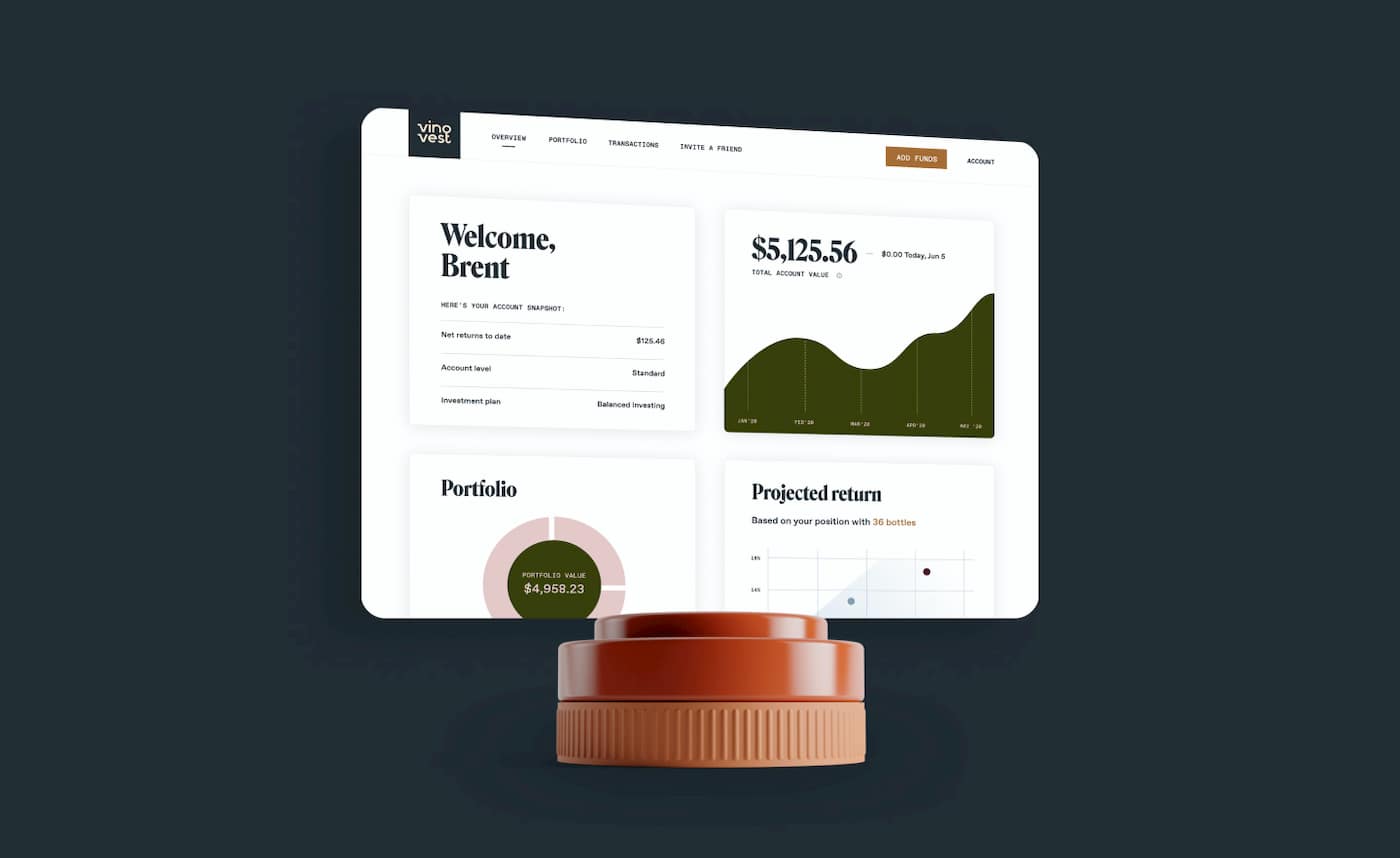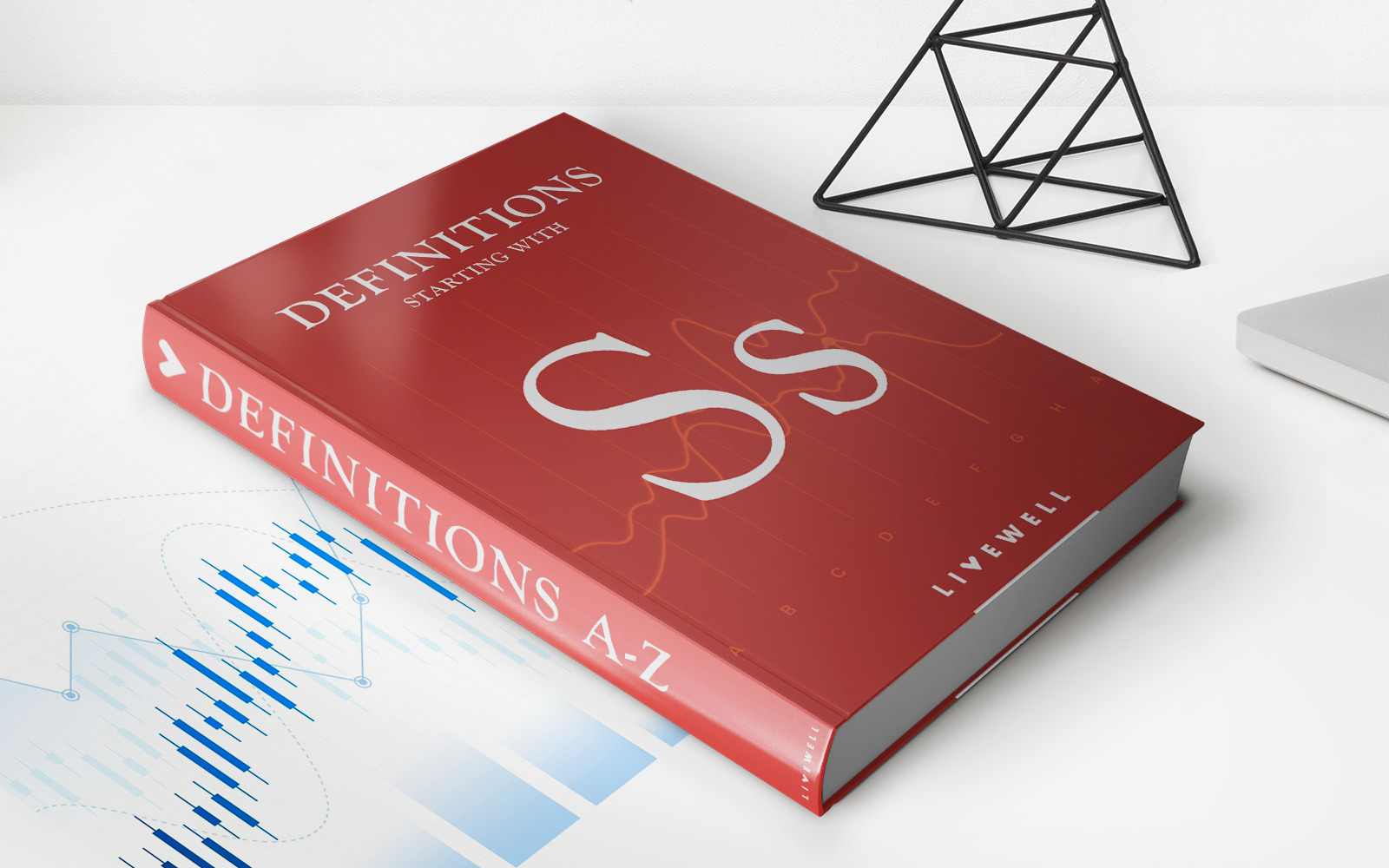

Finance
How To Use ChatGPT To Pick Stocks
Published: January 18, 2024
Discover how to leverage the power of ChatGPT to make informed decisions when it comes to picking stocks in the finance industry.
(Many of the links in this article redirect to a specific reviewed product. Your purchase of these products through affiliate links helps to generate commission for LiveWell, at no extra cost. Learn more)
Table of Contents
Introduction
Welcome to the exciting world of investing in stocks! Whether you’re a seasoned investor or just starting out, finding the right stocks to invest in can be a daunting task. With so many options and variables to consider, it’s easy to feel overwhelmed. However, thanks to advancements in technology and artificial intelligence, there’s now a powerful tool at your disposal to help you make more informed decisions – ChatGPT.
ChatGPT is a language model developed by OpenAI that uses machine learning to generate text based on the input it receives. It has been fine-tuned on an impressive amount of financial data, making it a valuable resource for stock market analysis. With its natural language processing capabilities, ChatGPT can understand and respond to questions, providing insights and recommendations to aid your stock picking process.
What sets ChatGPT apart from other stock analysis tools is its ability to converse with users, allowing for a more interactive and personalized experience. You can ask ChatGPT questions about specific stocks, market trends, or even seek investment advice. Its responses are generated based on patterns in financial data, news articles, and other relevant information it has been trained on.
Using ChatGPT doesn’t mean you should blindly rely on its recommendations. Instead, think of it as an additional resource to consider when making investment decisions. It can provide valuable insights and uncover information that may have been overlooked, but ultimately the final decision rests with you.
In this article, we will explore how to effectively use ChatGPT to pick stocks. We’ll discuss gathering stock market data, preparing the data for analysis, and the various ways to utilize ChatGPT’s capabilities for stock analysis. We’ll also delve into interpreting ChatGPT’s insights and incorporating its recommendations into your stock picking strategies. By the end, you’ll have a clear understanding of how to leverage ChatGPT to enhance your investment decisions.
Understanding ChatGPT and its capabilities
To effectively utilize ChatGPT for stock analysis, it’s important to have a comprehensive understanding of its capabilities. ChatGPT has been trained on a vast amount of financial data, which enables it to provide valuable insights into the stock market.
One of the key features of ChatGPT is its ability to understand and respond to natural language input. This means you can ask it questions about specific stocks, market trends, or any other relevant information you’d like to know. For example, you can ask ChatGPT, “What is the current price of Apple stock?” or “What are some promising tech stocks to invest in?” ChatGPT will process your query and generate a response based on its understanding of the data it has been trained on.
ChatGPT also has the capability to analyze historical stock data and identify patterns or trends. By inputting historical price charts or data, you can ask ChatGPT to identify potential support or resistance levels, chart patterns, or other technical indicators. This can be helpful in making decisions based on technical analysis.
Furthermore, ChatGPT can provide insights on market news and trends. You can ask it questions about recent market developments or specific events that may impact stock prices. It can also provide you with up-to-date information on company earnings reports, mergers and acquisitions, and other significant news that may affect stock performance.
It’s important to note that while ChatGPT is a powerful tool, it has its limitations. It is a language model and does not possess the ability to predict the future or provide foolproof investment advice. It generates responses based on patterns in the data it has been trained on, and there is always the chance of generating inaccurate or biased information. Therefore, it’s crucial to use ChatGPT’s insights as part of a broader analysis, taking into consideration other factors such as fundamental analysis, market trends, and risk management strategies.
In the next sections, we will explore how to gather stock market data and prepare it for analysis, laying the foundation for utilizing ChatGPT effectively in your stock picking process.
Gathering stock market data
Before diving into the analysis, it’s essential to gather the necessary stock market data to feed into ChatGPT. Having access to accurate and reliable data is crucial for making informed investment decisions.
There are several sources from which you can gather stock market data. Below are some common methods to consider:
- Financial websites: Websites like Yahoo Finance, Google Finance, and Bloomberg provide a wealth of information on stocks, including historical price charts, financial statements, analyst recommendations, and news articles. These platforms often offer basic data for free, with the option to access more detailed data through paid subscriptions.
- Stockbrokers: Many online stockbrokers provide their clients with access to comprehensive stock market data. If you have an account with a brokerage firm, explore the research and analysis tools they offer, such as real-time quotes, technical indicators, and company profiles. Take advantage of these resources to gather the data you need.
- Data providers: There are third-party data providers that offer comprehensive and customizable stock market data. These providers offer subscription-based services that cater to individual investors, financial institutions, and trading platforms. Examples include Refinitiv, FactSet, and Quandl. Consider your specific needs and budget when exploring these options.
- APIs and data feeds: For more advanced users or developers, utilizing APIs (Application Programming Interfaces) or data feeds can provide direct access to real-time or historical stock market data. Providers such as Alpha Vantage, Intrinio, and Polygon.io offer developer-friendly APIs to retrieve data programmatically.
- Financial news outlets: News outlets like CNBC, Reuters, and Financial Times are excellent sources of current market news, analysis, and opinions from experts. These publications can provide valuable insights into market trends, industry developments, and macroeconomic factors that may impact stock prices.
When gathering stock market data, it’s important to ensure the data is accurate, reliable, and up-to-date. Validate the data from multiple sources to minimize the risk of relying on inaccurate information.
Once you have collected the necessary data, you’ll be ready to prepare it for analysis. In the next section, we’ll discuss the steps to clean and organize the data before utilizing ChatGPT for stock analysis.
Preparing the data for analysis
Before you can effectively analyze stock market data using ChatGPT, it’s important to prepare the data so that it can be easily consumed and understood. Data preparation involves several steps to ensure the information is accurate and organized.
Here are some key steps to consider when preparing your stock market data:
- Clean the data: Start by cleaning the data to remove any errors, missing values, or outliers that may affect the accuracy of your analysis. This process involves identifying and correcting any inconsistencies or discrepancies in the data. Utilize tools such as spreadsheets or programming languages like Python to clean and manipulate the data effectively.
- Normalize the data: Stock market data often includes various metrics such as price, volume, and market capitalization. These metrics may have different scales, making it difficult to compare or analyze them effectively. Normalize the data by scaling each metric to a common range, such as a percentage change, to ensure a fair comparison.
- Organize the data: Structure the data in a way that is easy to analyze and interpret. This involves organizing the data into columns and rows, with each column representing a specific variable or metric (e.g., date, price, volume), and each row representing a specific observation. This structured format allows you to easily import the data into tools or software for further analysis.
- Create relevant variables: In addition to the raw stock market data, consider creating new variables that can provide additional insights for analysis. For example, you can calculate moving averages, relative strength indicators (RSI), or other technical indicators to gain a better understanding of stock price trends and momentum.
- Account for corporate actions: Corporate actions, such as stock splits, dividends, or mergers, can impact the accuracy and interpretation of historical stock data. Make sure to adjust the data to reflect any relevant corporate actions so that your analysis is based on adjusted prices and accurate historical trends.
While preparing the data, it’s crucial to maintain data integrity and ensure that the adjustments or transformations made are properly documented. By following these steps, you’ll have a clean, organized, and standardized dataset ready to be used for analysis.
In the next section, we’ll explore how to leverage ChatGPT for stock analysis and utilize its capabilities to gain valuable insights into the market.
Using ChatGPT for stock analysis
Once you have gathered and prepared the necessary stock market data, it’s time to utilize ChatGPT for stock analysis. ChatGPT can provide valuable insights and assist in making informed investment decisions.
Here are some ways you can leverage ChatGPT for stock analysis:
- Asking specific questions: ChatGPT’s natural language processing capabilities make it easy to ask specific questions about stocks or market trends. For example, you can ask ChatGPT, “What is the future outlook for Company X?” or “Has there been any recent news that could impact the stock price of Company Y?”. Utilize ChatGPT to gather information that may not be readily available or to gain a different perspective on certain stocks.
- Requesting technical analysis: ChatGPT can analyze historical stock data and provide insights based on technical indicators. You can ask ChatGPT to identify support and resistance levels, detect chart patterns, or suggest potential entry or exit points based on these technical indicators. This can be particularly useful for traders who incorporate technical analysis into their investment strategies.
- Exploring market news and trends: ChatGPT can keep you updated on market news and trends. You can ask ChatGPT about recent market developments, industry trends, or macroeconomic factors that may impact stock prices. Staying informed about the latest news and trends can provide valuable context when analyzing stocks and making investment decisions.
- Creating hypothetical scenarios: Utilize ChatGPT to create hypothetical scenarios and analyze their potential impact on stocks. For example, you can ask ChatGPT, “How would Company Z’s stock price be affected if they announce a strategic partnership?” or “What could be the possible long-term implications of a change in government regulations on the energy sector?”. These scenarios can help you evaluate the potential risks and rewards associated with specific events or trends.
- Comparing stocks: ChatGPT can assist in comparing different stocks or industries. You can ask ChatGPT to provide an analysis on how two stocks stack up against each other in terms of financial performance, market positioning, or growth prospects. This can help you make more informed decisions when selecting stocks for your portfolio.
Remember, while ChatGPT can provide valuable insights, it’s important to use its recommendations as part of a comprehensive analysis. Consider other factors such as fundamental analysis, market conditions, and risk management strategies when making investment decisions.
In the next section, we’ll discuss how to interpret ChatGPT’s insights and incorporate them into your stock picking strategies.
Interpreting ChatGPT’s insights
As you utilize ChatGPT for stock analysis, it’s crucial to properly interpret the insights it provides. While ChatGPT can generate valuable information, it’s important to critically evaluate and validate its recommendations before implementing them into your investment strategy.
Here are some guidelines for interpreting ChatGPT’s insights:
- Consider multiple perspectives: ChatGPT’s responses are generated based on patterns in the data it has been trained on. However, the stock market is influenced by various factors, including economic conditions, geopolitical events, and investor sentiment. Take into account other sources of information and viewpoints to obtain a well-rounded perspective.
- Validate the information: Validate the information provided by ChatGPT through additional research and analysis. Cross-reference the insights with reliable financial sources, market data, and expert opinions. This validation process is instrumental in determining the accuracy and credibility of ChatGPT’s recommendations.
- Consider the limitations: While ChatGPT is a powerful tool, it has its limitations. It is a language model trained on historical data and patterns, and it cannot predict the future with certainty. Be aware of these limitations and use ChatGPT’s insights as part of a broader analysis.
- Stay informed with real-time data: The stock market is dynamic and constantly evolving. Incorporate real-time data and news updates into your analysis to ensure you have the most up-to-date information. ChatGPT’s insights should be considered in conjunction with the current market conditions.
- Apply critical thinking: Apply critical thinking skills when interpreting ChatGPT’s insights. Consider the underlying assumptions, potential biases, and limitations of the model. Use your own expertise and judgment to assess the relevance and reliability of the information provided by ChatGPT.
By adopting a critical and analytical approach, you can leverage ChatGPT’s insights effectively and gain a deeper understanding of the stock market. Incorporate the information into your overall investment strategy while considering other factors such as risk tolerance, financial goals, and portfolio diversification.
In the next section, we’ll discuss how to incorporate ChatGPT’s recommendations into your stock picking strategies.
Incorporating ChatGPT’s recommendations in stock picking strategies
ChatGPT’s insights can be a valuable addition to your stock picking strategies. While it shouldn’t be the sole basis for your investment decisions, it can provide you with unique perspectives and uncover information that may have been overlooked. Here’s how you can effectively incorporate ChatGPT’s recommendations into your stock picking strategies:
- Use as a starting point: Consider ChatGPT’s recommendations as a starting point for further analysis. Use it to identify potential investment opportunities or stocks that require closer examination. Combine ChatGPT’s insights with your own research, fundamental analysis, and risk assessment to make informed decisions.
- Validate with other indicators: Validate ChatGPT’s recommendations by comparing them with other indicators and market data. For example, if ChatGPT suggests a stock is undervalued, verify this by examining key financial ratios, such as price-to-earnings (P/E) ratio or price-to-book (P/B) ratio. Look for consistency across multiple indicators to increase confidence in your decision-making process.
- Consider risk tolerance: Factor in your risk tolerance when incorporating ChatGPT’s recommendations. Assess the potential risks and rewards associated with the recommended stocks and align them with your risk appetite. Keep in mind that higher return potentials often come with higher volatility or risk levels.
- Monitor performance: Continuously monitor the performance of the stocks you select based on ChatGPT’s recommendations. Regularly review your portfolio and adjust as necessary. Consider setting alerts or utilizing portfolio management tools to stay informed about any changes in the stocks’ performance or market conditions.
- Learn from outcomes: Learn from both successes and failures. Evaluate the accuracy of ChatGPT’s recommendations over time and identify any patterns or tendencies. Adjust your strategies based on the outcomes and continuously refine your approach to maximize the benefits of incorporating ChatGPT’s insights.
- Stay updated: As ChatGPT continues to evolve and learn, stay updated with the latest versions and improvements. Regularly check for any updates or enhancements that could enhance the quality and reliability of the insights provided.
Remember, investing in the stock market carries inherent risks, and there is no foolproof strategy. ChatGPT’s recommendations should be considered alongside other fundamental analysis, market research, and your own investment goals.
By incorporating ChatGPT’s insights responsibly, you can enhance your stock picking strategies and increase your chances of making informed investment decisions.
In the next section, we’ll conclude our discussion on leveraging ChatGPT for stock analysis.
Conclusion
Incorporating ChatGPT into your stock analysis can be a game-changer in your investment journey. This powerful tool, with its natural language processing capabilities and training on vast amounts of financial data, provides valuable insights and perspectives to enhance your decision-making process.
However, it’s important to approach ChatGPT’s recommendations with caution. While it can offer valuable insights, it should not be the sole basis for your investment decisions. Validate its recommendations, consider other indicators, and maintain a comprehensive analysis approach that encompasses fundamental analysis, market trends, and risk assessment.
Remember that the stock market is dynamic and ever-changing. Stay informed with real-time data, news updates, and expert opinions to complement the insights provided by ChatGPT. Continuously monitor and evaluate the performance of the stocks you select, learning from both successes and failures.
By leveraging ChatGPT effectively and incorporating its recommendations into your stock picking strategies, you can gain a deeper understanding of the market, identify potential investment opportunities, and make more informed decisions based on a well-rounded analysis.
However, it’s important to exercise prudence and maintain a critical mindset. While ChatGPT is a powerful tool, it has its limitations. Be aware of these limitations, consider multiple perspectives, validate information, and apply your own expertise and judgment.
With the right approach, incorporating ChatGPT into your stock analysis can provide you with a valuable edge in the market. Stay curious, stay updated, and adapt your strategies as needed to navigate the ever-changing landscape of stock investing.














